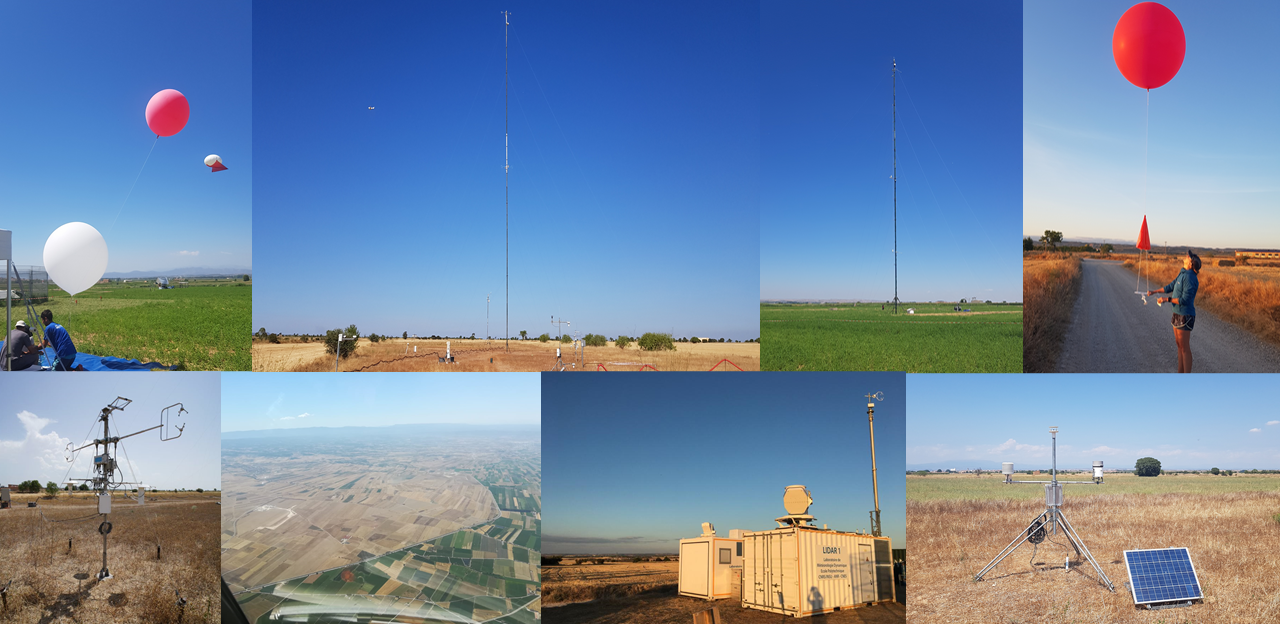Land surface Interactions with the Atmosphere over the Iberian Semi-arid Environment (LIAISE)
July 2021 – The Met Office participates in a field campaign on Land surface Interactions with the Atmosphere over the Iberian Semi-arid Environment (LIAISE).
From 13- 27 July 2021 a Special Observing Period (SOP) of the observational field campaign LIAISE took place in the Ebro river basin of Catalonia in north-eastern Spain, enhancing a longer multi-month period covering the whole of the summer for collecting surface and near surface data.
LIAISE is an international initiative with over 25 partner institutions and is a study in support of the World Climate Research Programme's (WCRP) Grand Science Challenge on Water for the Food Baskets of the World and the HYdrological cycle in the Mediterranean Experiment (HyMeX) initiative.
 Fig 1. Observation platforms used in LIAISE
Fig 1. Observation platforms used in LIAISE
The LIAISE study region offers the opportunity to study semi-arid meteorology in an area that has two clearly defined zones; one that is irrigated and one that is naturally rain fed, but very dry during the summer months.
Observations include meteorological parameters and flux measurements at a number of heights, surface canopy measurements and subsurface moisture, surface temperature, thermal imaging and boundary layer height, and were collected at the natural rain fed site using the Met Office Cardington’s instrumented supersite. The Met Office supersite is part of a network of observation sites, deployed by European project partners, with sites representative of a range of Mediterranean land cover types and including a second supersite at an irrigated location. The ground-based observations were further enhanced through the deployment of three research aircraft and novel ground based remote sensing.
Soil moisture plays a critical role in determining the heating and moistening of the near surface atmosphere and evolves over timescales ranging from days to years. This means that the correct initialisation and evolution of the surface conditions can influence land-atmosphere-hydrology interactions on these timescales and hence have the potential to improve forecasts on daily timescales, help to constrain the divergence of seasonal predictions and improve our understanding of climate change predictions. The restricted soil moisture availability in semi-arid regions has a sensitive control on the transpiration from vegetation and as such is an area of scientific uncertainty in land surface models. Moreover, the Global Land–Atmosphere Coupling Experiment (GLACE) model intercomparison study showed that semi-arid regions have the strongest land atmosphere interactions, due to this sensitivity in the surface fluxes and their interaction with responsive boundary layer states (Koster et al. 2006). The impact of limited availability of water on crops in semi-arid regions also increases the human influence on the terrestrial water cycle, through activities such as irrigation. By the very nature of this activity, this substantially changes the surface energy balance and fluxes to the atmosphere, influencing the evolution of the boundary layer.
At the Met Office, scientists from the Atmospheric Processes and Parametrizations and the Observational Based Research teams will be involved in analysing the collected data as part of the wider LIAISE effort, and using these data to evaluate high-resolution numerical simulations with the Unified Model and the community land surface model Joint UK Land Environment Simulator (JULES). A series of community modelling experiments will be designed as part of the Global Energy and Water cycle Exchanges (GEWEX) activities, several of which will led by the Met Office. These modelling initiatives will make use of state-of-the-art models to help highlight gaps in our knowledge and identify current model deficiencies within land surface processes and land-atmosphere-hydrology interactions.
References
Koster, R. D., and 25 co-authors, 2006: GLACE: The Global Land–Atmosphere Coupling Experiment. Part I: Overview. J. Hydrometeor., 7, 590-610. https://doi.org/10.1175/JHM510.1


